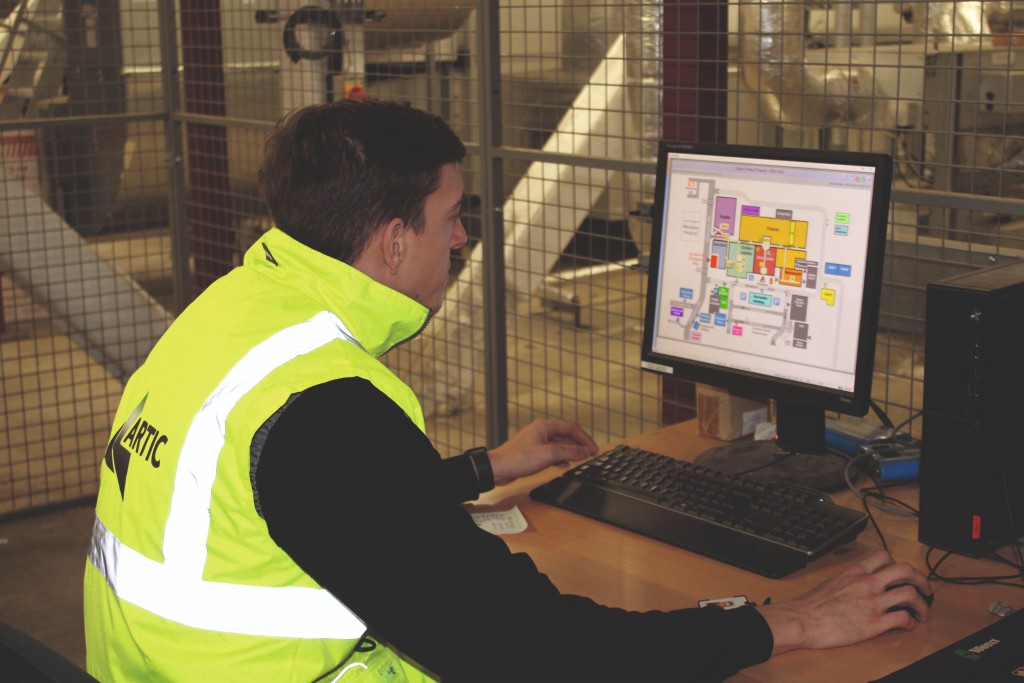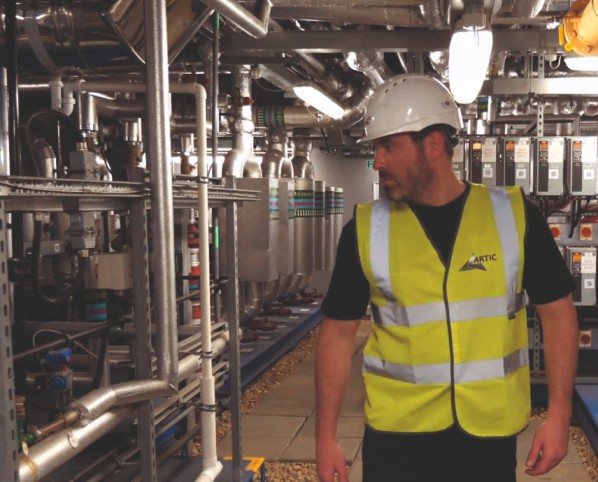From reactive fixes to proactive solutions: The hard FM dilemma

Derek Parker, Business Development Director at Artic Building Services, discusses how data-led maintenance transforms hard FM.
For facility managers, building owners, and estates managers, navigating the intricate world of Hard FM can feel like walking a tightrope.
Balancing optimal building performance with cost-effectiveness and compliance demands precision and foresight. Traditional ‘run-to-failure’ maintenance often falls short, leading to unexpected breakdowns, expensive repairs and disrupted operations.
Challenges in traditional practices
Before delving deeper into the benefits of data-led maintenance, it's crucial to understand the limitations of traditional maintenance practices.
Reactive maintenance, often the default approach for many facilities, involves waiting for equipment to fail before taking action. While this method may seem cost-effective in the short term, it comes with several drawbacks. Unexpected breakdowns lead to downtime, productivity losses, and emergency repair expenses. Moreover, reactive maintenance does not address underlying issues, resulting in recurring problems and escalating costs over time.
Similarly, preventive maintenance, while more proactive than reactive approaches, relies on fixed schedules and predefined tasks. This ‘one-size-fits-all’ approach often results in unnecessary maintenance interventions and wasted resources. Additionally, preventative maintenance does not account for real-time conditions or equipment performance, leading to inefficiencies and missed opportunities for optimisation.
The smart building ally
But what if there was a better way to predict problems before they arise, optimise system performance, and unlock significant cost savings? This is where data-led maintenance, a revolutionary approach that transforms Hard FM by using intelligent sensors and sophisticated algorithms to turn valuable data into actionable insights, comes in.
Think of data-led maintenance as your building's very own crystal ball. Sensors embedded in your HVAC, electrical, and mechanical systems constantly gather information, revealing hidden patterns and potential issues before they become disruptive realities.
This proactive approach delivers a number of benefits for Hard FM operations.
Data reveals hidden inefficiencies, allowing for fine-tuning of system operations. Imagine HVAC systems running at peak efficiency, minimising energy waste and creating a comfortable environment for everyone.
It removes the scramble to fix unexpected breakdowns. Data-led maintenance alerts to potential issues well in advance, allowing for preventative repairs and minimising disruptive downtime. Think of it as your building whispering a heads-up, letting you know it needs a little TLC before things go awry.
Guesswork and outdated schedules become a thing of the past. Data provides a clear picture of a building's health, empowering informed decisions on resource allocation, maintenance schedules, and equipment investments. Imagine having a roadmap for your building, showing you exactly where to invest for maximum efficiency and cost savings.
The ultimate reward is cost savings and ROI. Data-led maintenance delivers substantial cost savings in the long run. Reduced repair costs, lower energy bills, consistent end user productivity and extended equipment lifespan contribute to a significant return on investment. Think of it as putting your maintenance budget on a smart diet, optimising spending for maximum output.

Real-life applications
Let's explore some real-life examples of how data-led maintenance is revolutionising Hard FM operations:
• Smart HVAC Systems: Data-driven sensors embedded within HVAC systems continuously monitor temperature, humidity levels, airflow rates, and equipment performance. By analysing this data in real time, facilities can identify anomalies, optimise energy usage, and pre-emptively address potential failures, ensuring optimal comfort and efficiency.
• Predictive Asset Management: Through predictive analytics, organisations can forecast equipment failures and prioritise maintenance activities based on criticality and risk. By leveraging historical data, performance trends, and machine learning algorithms, facilities can extend asset lifespan, plan capital expenditure, minimise downtime, and reduce operational costs.
• Condition-Based Monitoring: With condition-based monitoring, sensors collect data on equipment health and performance parameters, such as vibration, temperature, and pressure. By establishing baseline conditions and setting threshold values, facilities can detect deviations from normal operation and trigger maintenance actions before failures occur, enhancing reliability and safety.
• IoT-Enabled Building Management Systems: Integrated IoT platforms aggregate data from various building systems, including lighting, security, HVAC, and occupancy sensors. By centralising data collection and analysis, facilities gain holistic insights into building operations, optimise energy usage, and improve occupant comfort and safety.
Addressing concerns
While the benefits of data-led maintenance are undeniable, it's natural for organisations to have concerns about implementation and security. However, these concerns can be readily addressed in the following ways:
• Phased Implementation: One approach to alleviate concerns surrounding the initial investment is to implement data-led maintenance in phases. By starting with key systems or areas within your facility and gradually expanding the implementation, you can manage costs more effectively while simultaneously building confidence in the efficacy of the new approach. This phased rollout allows for a controlled transition, minimising disruptions to ongoing operations while maximising the benefits over time.
• Training Programs: Another critical aspect of embracing the future of Hard FM is investing in comprehensive training programs for your team. With the right training on data analysis techniques and maintenance best practices, your staff can acquire the necessary skills and knowledge to effectively leverage the insights provided by data-led maintenance systems. This investment in training not only enhances the capabilities of your workforce but also instils a culture of continuous learning and improvement within your organisation.
• Robust Data Security Measures: Data security is undeniably a top concern for any organisation considering the adoption of data-led maintenance. To address this concern, it's crucial to partner with providers that prioritise robust data security measures. Look for providers that adhere to industry best practices and standards, such as encryption protocols, access controls, and regular security audits. By choosing providers with strong cybersecurity protocols in place, you can ensure that your building's data remains safe and secure from potential threats or breaches.
The future of Hard FM lies in embracing data-driven solutions. By transforming reactive maintenance into proactive management, you can unlock a world of enhanced efficiency, cost savings, and a more sustainable future for your buildings. So, take the first step and unlock the power of data to transform your Hard FM operations. Your building, and your budget, will thank you for it.








